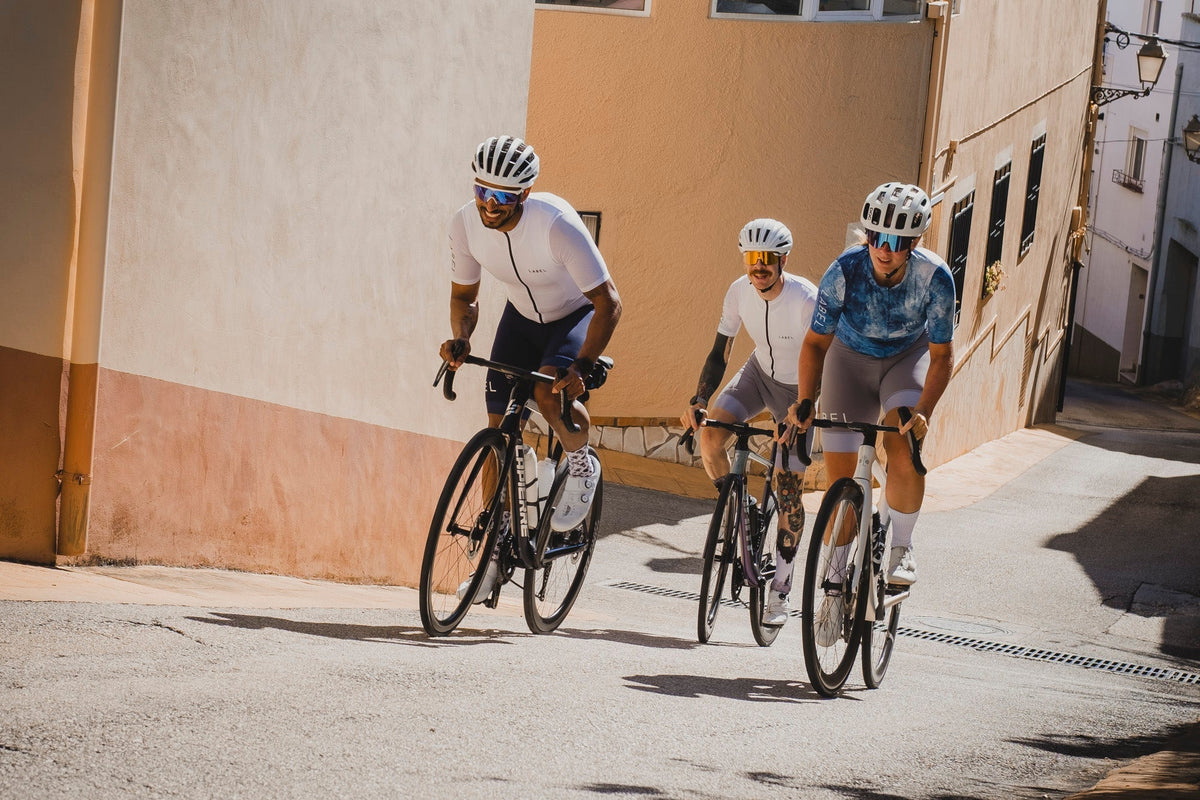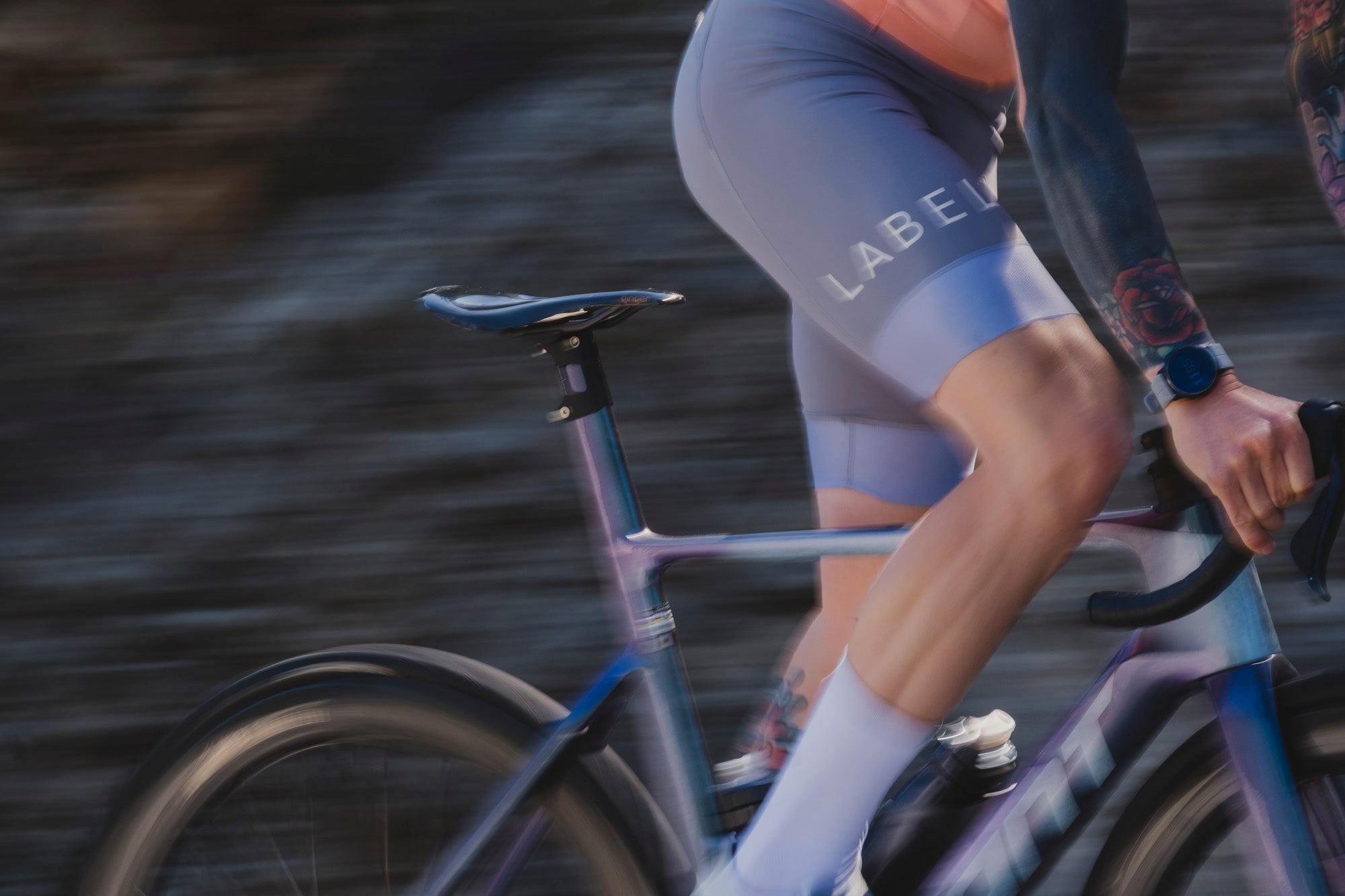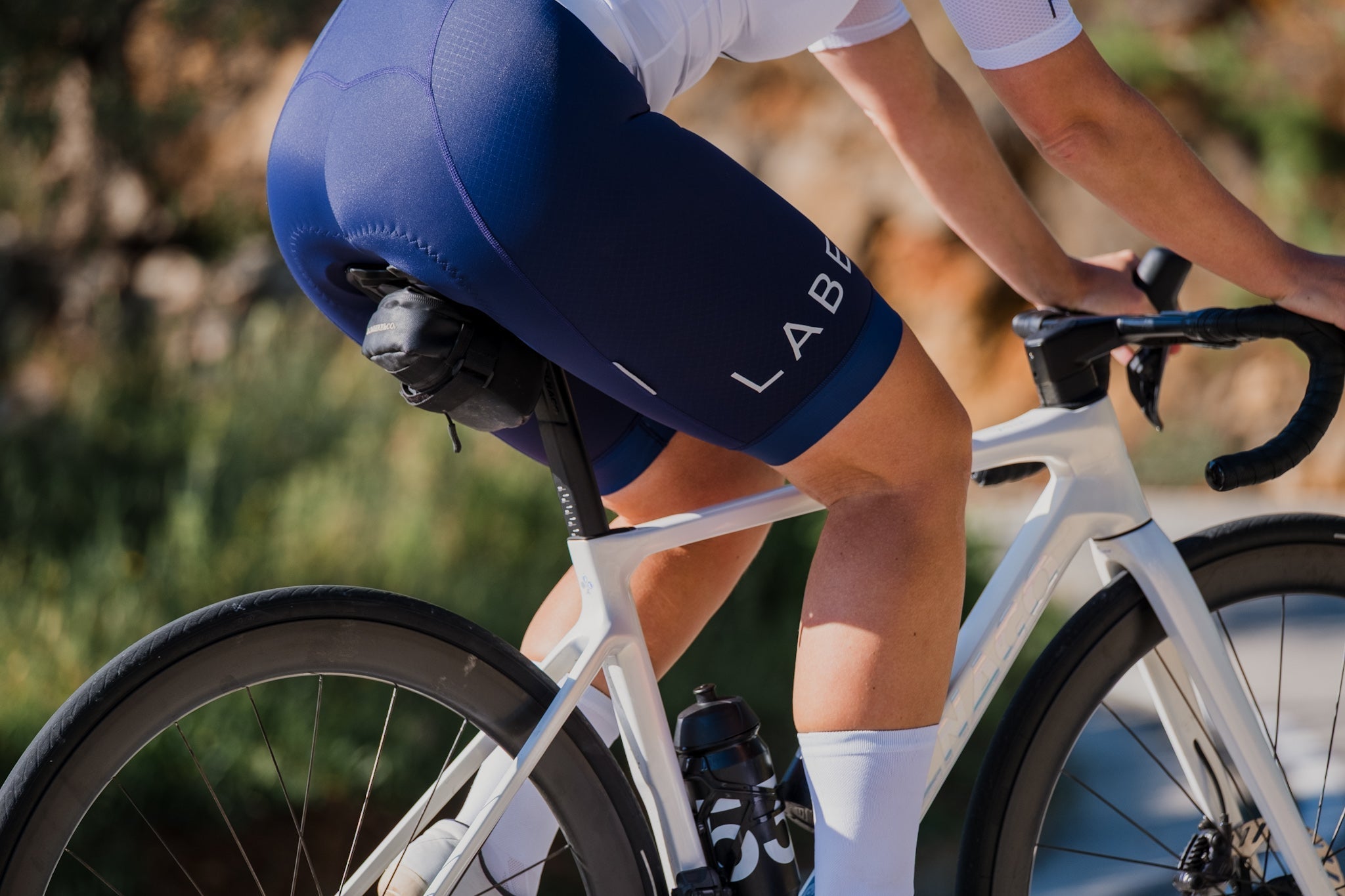
Od zakladateľa
Už nejaký čas jazdím v recyklovaných cyklistických dresoch. Nie vždy. Vlastne, keď mi niekto prvýkrát poukázal na to, že môj dres je vyrobený z plastových fliaš, bol som skeptický. Znelo to skôr ako marketingový trik, než čokoľvek, čo by ste si na ceste naozaj všimli. Ale časom som si to rozmyslel. Alebo som si to možno len začal viac všímať.
Hneď na začiatku si to ujasnime: toto nie je článok o tom, ako musíte nosiť recyklované dresy alebo ako to zachráni planétu. Takýto tlak zriedkakedy pomôže. Je to skôr zmes myšlienok a otázok, ktoré sa vynárajú, keď v týchto veciach skutočne jazdíte, premýšľate o nich, alebo možno, len možno, vám trochu záleží na tom, čo nosíte a odkiaľ to pochádza.
Čo je teda recyklovaný cyklistický dres?
V podstate je to jednoduché: namiesto výroby látok z nových, panenských materiálov, ako je polyester na báze ropy, značky teraz používajú priadze vyrobené z recyklovaného materiálu. To často znamená použité PET fľaše alebo priemyselný odpad, ako sú odrezky. Cieľom je znížiť dopyt po surovinách, znížiť emisie a dať plastovému odpadu druhý život.
Znie to priamočiaro, ale realita je trochu zložitejšia.
Naozaj to robí rozdiel?
To je tá otázka, však? Na jednej strane áno. Používanie recyklovaného polyesteru spotrebuje menej energie a vody ako výroba panenských vlákien. Môže tiež znížiť množstvo plastového odpadu zo skládok alebo oceánov. Podľa niektorých zdrojov môže výroba látky z recyklovaného PET znížiť emisie CO2 až o 30 až 50 percent.
Čísla sa však líšia v závislosti od dodávateľa, metódy recyklácie a toho, čo sa presne meria. Tu sa veci začínajú komplikovať. Nie všetok recyklovaný obsah je rovnaký. Niektorý sa recykluje mechanicky, iný chemicky. Niektoré zahŕňajú plasty, ktoré sa ocitli v oceánoch. Iné nie.
Úprimne povedané, niekedy strácam prehľad o detailoch. Viem len, že je lepšie nosiť niečo, čo nebolo vyrobené od základu za cenu väčšieho množstva fosílnych palív. A možno to zatiaľ stačí.
Je to stále vysoký výkon?
Stručná odpoveď: áno. Recyklované dresy, ktoré som nosil, sa cítia rovnako ako akékoľvek iné dobre vyrobené oblečenie. Priedušné, ľahké, rýchloschnúce. Niektoré sú prekvapivo ešte mäkšie. Používal som ich na dlhých letných túrach, stúpaniach začiatkom jesene a na niekoľkých špinavých jarných okruhoch, kde všetko zmokne.
Kvalita však závisí od značky a spôsobu spracovania materiálu. Niektoré recyklované látky sú náchylnejšie na žmolkovanie alebo stratu tvaru po opakovanom praní. Iné držia skvele.
Takže si myslím, že ponaučenie znie: nepredpokladajte, že recyklovaný znamená „menej ako“. Neznamená to tak. Ale tiež nepredpokladajte, že sú všetky vyrobené rovnako. Táto časť si stále vyžaduje skúšanie, kladenie otázok, možno aj prečítanie štítku.
Stojí to viac?
Niekedy. Ale nie vždy. Mnoho značiek uvádza ceny svojich recyklovaných dresov v rovnakom rozpätí ako bežné kvalitné dresy. V Label Collective sme sa rozhodli, že recyklovaný materiál nebude synonymom prémiových cien. Ak chceme, aby si ľudia tieto veci osvojili, musia sa zdať dostupné, nie ako luxus.
Mám priateľov, ktorí hovoria, že radi zaplatia o pár eur viac, ak to znamená lepší príbeh o produkte. Iným to nevadí, pokiaľ to dobre sedí a nevyzerá to elegantne. Obe možnosti mi dávajú zmysel.
Ale je to naozaj udržateľné?
To je ťažšia otázka. Recyklované neznamená automaticky udržateľné. Širší obraz zahŕňa to, ako sa dres vyrába, ako dlho vydrží, čo sa s ním stane, keď sa opotrebuje, a či ho ľudia skutočne často používajú. Trvanlivosť je dôležitejšia, než si väčšina z nás myslí.
Je tu aj celý problém mikroplastov. Vždy, keď perieme syntetické oblečenie, uvoľňuje vlákna. To zahŕňa aj recyklované. Riešenia ako pracie vrecká, filtre alebo lepšia konštrukcia látky pomáhajú, ale problém stále pretrváva. Nevyriešili sme ho.
Ak už v cyklistike používame syntetické materiály kvôli ich výkonnostným výhodám, nie je lepšie zvoliť si tie s menším dopadom?
Prečo si teda vybrať recyklovaný materiál?
Pre mňa je to jednoduché: je to lepšia voľba v rovnakej kategórii. Nejde o dokonalosť. Len o pokrok.
Znamená to nosiť niečo, v čom sa cítim dobre a s čím sa cítim dobre. Pomáha mi to podporovať značky, ktoré robia veci opatrne. A áno, je to malý signál, že úplne neignorujem širšie súvislosti.
Nie každá jazda musí byť výnimočná. Ale nezaškodí, ak ňou bude váš dres.
Časté obavy a skutočné myšlienky
-
Je to len greenwashing . Možno áno. Niektoré značky používajú slovo „recyklovaný“ bez akéhokoľvek dôkazu alebo s 5 % obsahom recyklovaného materiálu. To nie je užitočné. Vždy hľadajte skutočné informácie. Certifikácie ako GRS (Global Recycled Standard) pomáhajú. Aj napriek tomu musíte dôverovať dodávateľskému reťazcu. Transparentnosť je dôležitá.
-
Látka sa cíti inak . Niekedy. Niektorí ľudia hovoria, že si to všimnú, iní nie. Osobne si myslím, že by som to v slepom teste nevedela povedať. Ale aj keby som to vedela, nebolo by to nevyhnutne zlé. Iné neznamená horšie.
-
Jeden dres nič nevyrieši . Pravda. Ale státisíce dresov vyrobených týmto spôsobom? To je posun. Najmä ak to celkovo posunie odvetvie smerom k lepším postupom.
Trendy a kam smerujú
Stále viac značiek sa uberá týmto smerom. Nielen malé, ale špecifické. Veľké mená pomaly budujú recyklované produkty a niektoré experimentujú s obehovými modelmi, kde môžete staré vybavenie vrátiť na recykláciu alebo opätovné použitie.
Ale je to pomalé. Výrobné systémy stále dobiehajú zameškané. Dodávateľské reťazce sú komplikované. A dopyt je nerovnomerný. Myslím si, že niektorí ľudia stále neveria, že recyklovaný materiál môže znamenať vysoký výkon. To sa môže zmeniť, keď ich bude nosiť viac profesionálnych tímov, alebo keď prví používatelia (ako niektorí z nás) budú o tejto skúsenosti stále hovoriť.
A čo strih a dizajn?
Dobrá správa: nič nie je ohrozené. Aspoň už nie. Najstaršie verzie recyklovanej stavebnice, ktoré som vyskúšal, boli trochu tuhé. Nie zlé, len... menej flexibilné.
Ale tie nové? Dobre sa naťahujú, dobre dýchajú a nepadajú. Strih je priliehavý tam, kde má byť. Žiadne zvláštne švy. A potlače vyzerajú ostro. Farby držia aj po vypraní.
Úprimne, keby vám nikto nepovedal, že je to recyklované, nevedeli by ste to.
Je to pre každého?
Možno nie. Neočakávam, že každý jazdec prejde na túto kategóriu. Niektorí ľudia sú verní svojim značkám alebo si jednoducho chcú obliecť to, čo im vyhovuje. To je v poriadku.
Ale pre každého, kto je zvedavý alebo otvorený vyskúšať niečo nové, by som povedal, nech do toho ide. Aj keby to bol len jeden kus. Začnite s letným dresom. Alebo vestou. Alebo s nohavicami, ak sa cítite odvážne.
A pýtajte sa otázky. Odkiaľ je materiál? Koľko z neho sa recykluje? Uvádza značka, čo sa stane, keď sa opotrebuje?
Kde do toho zapadá Label Collective
Keď sme vytvárali našu kolekciu jar/leto 2025, cieľom nebolo vytvoriť výrazný dres. Bolo to vytvoriť skvelý dres. Taký, ktorý bude fungovať rovnako dobre ako ktorýkoľvek iný špičkový dres, s pridanou výhodou, že je vyrobený z recyklovaných látok.
Nechceli sme, aby to bolo v titulku. Chceli sme, aby to bolo normálne. Dokonca očakávané.
Takže sme spolupracovali s továrňami, ktoré ponúkali certifikované recyklované priadze. Zachovali sme čistý, ostrý a nadčasový dizajn. Žiadne okázalé tričky, žiadny prehnaný dizajn. Len dres, ktorý si budete chcieť obliecť znova a znova. Taký, ktorý môžete hodiť do práčky, zavesiť na sušenie a vziať si ho na ďalšiu dlhú jazdu.
A spätná väzba? Je pozitívna. Jazdci si všímajú pohodlie, priedušnosť. Niektorí si ani neuvedomili, že je recyklovaný, kým sme im to nepovedali. To sa cíti ako víťazstvo.
Záverečná myšlienka (alebo možno len pokračujúca)
Nesnažím sa ťa presviedčať. Chcem sa len podeliť o to, čo som si všimol. O tých malých veciach, ktoré sa sčítajú.
Napríklad, aký je to pocit, keď tvoj outfit odráža tvoje hodnoty. Alebo ako zmení konverzáciu, keď sa niekto opýta, čo máš na sebe.
Alebo ako sa začína zdať zvláštne nevybrať si recyklovaný materiál, keď existuje možnosť, keď funguje dobre, vyzerá dobre a stojí rovnako.
Možno to je ten skutočný posun. Nie v technológii alebo materiáli. Ale v očakávaniach.
To je niečo, za čím sa môžem postaviť.
Aj keď si stále nie som istý, či som na to všetko prišiel.
Nakupujte naše kolekcie

Dresy




